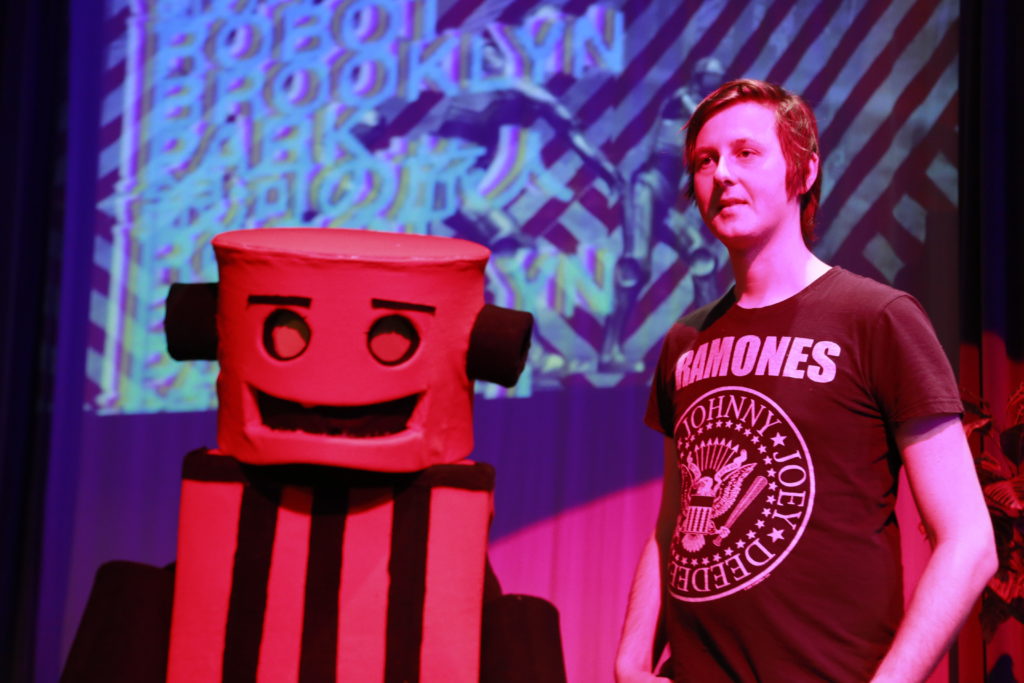Creating Community Ownership of the Bottineau Line
Artists are everywhere, on every block and in every community. Finding the opportunities for artists to share their creativity and networks can strengthen community bonds, build relationships, and help a community imagine what’s next. That is what Springboard for the Arts found from 2011 to 2014, working with the City of St. Paul and Twin Cities Local Initiatives Support Corporation along the Green Line light rail construction during the Irrigate project, which trained artists in partnership building, creative placemaking, and funded their creative projects. That model of artist-led community development has now been used in advance of construction for Cultivate Bottineau, a project coordinated by Hennepin County Bottineau Community Works and Springboard for the Arts, partnering with the communities along the proposed Blue Line light rail line. Through training, technical support, and funded projects, Cultivate Bottineau is bringing out the artists in the communities of North Minneapolis, Golden Valley, Robbinsdale, Brooklyn Park, and Crystal, to share a vision for their communities, and to cultivate creative people power. During the first year of Cultivate Bottineau over 40 artists participated in the creation of over 25 arts events along the Bottineau Corridor.

Expressing Values Through Community Art
Even if they’re creating work for the very first time, community artists have the power to use their art to express their values while transforming their neighborhoods.
For Josh Bindewald, a resident of Robbinsdale, the most mundane space—a plain generator box—presented an opportunity to turn an eyesore into a message of community vibrancy and environmental education. For his art installation, “Gardens Doing Good,” near a stop along the area’s future Blue Line expansion, Bindewald printed a drawing of butterflies that he transformed into a vinyl wrap that accompanies text about the importance of rain gardens.
Bindewald started out with dreams of becoming a graphic designer in high school and eventually decided to pursue a career in printmaking. He now works as the director of artist programs for a nonprofit in the Twin Cities called Highpoint Center for Printmaking. His contributions to the community outside of work include becoming a certified Master Water Steward.
Growing up, Bindewald became acutely aware of how quickly lakes were greening around Minnesota. Bindewald noted, “That’s where my concern for the environment and water quality took root. In the past few years, as I’ve walked my dog along trails in the park, I noticed that Robbinsdale had a nearly unnoticeable rain garden.” “Gardens Doing Good” brought about an opportunity to teach the community about the inherent value of rain gardens while instilling a sense of renewed commitment and order to the neglected rain garden space.
An invitation to the eyes, the art signals how critical a healthy landscape is to the community’s well-being. When asked why he chose butterflies, Bindewald responded, “Butterflies, while beautiful, are also fragile like our water system. They have an important role to play in the ecosystem.” Though they lack the aesthetic appeal of a typical garden, rain gardens play a vital role in maintaining the water quality of local lakes and rivers.

Giving Back in Optimism
Sculptor, multimedia installation creator, and performer, Nick Knutson creates a dynamic way for community members to envision the future light rail development by adding a fun twist and donning a big red robot costume. Knutson created an entertaining five-minute information video tour of the area surrounding the 85th Avenue light rail station.
The robot pays homage to a metal robot structure Knutson remembers standing out in the local park where he grew up. “The robot was in Central Park, the largest park in the city,” says Knutson. “I did a lot of work about [the robot] in college, but I didn’t re-visit it for 12 years.”
Knutson saw it as the perfect opportunity to share his artistic voice in a place where he grew up. “I used to want to run away from [Brooklyn Park] as a teenager,” he says. “It was nice to go back to a place that was bland and boring growing up and get to have more of a creative voice about how to represent the city as an adult.” Knutson’s goal was to be informative and fun and embrace the new light rail.
In the process, Knutson had a chance to grow his own skills as an artist by collaborating with local businesses, schools, and Hennepin County. “It was a big growth opportunity because I had to connect with people as a project manager, which was a skill that I was lacking.” The new opportunity to get his art in the public realm has been huge for Knutson in his career as an artist. After creating the video tour, Knutson also designed a gazebo and seating apparatus that enlivens the light rail plaza at 85th Avenue.
“Springboard helped us find artists in our community that we weren’t cognizant of,” said Brooklyn Park’s Community Development Senior Project Manager, Jennifer Jordan. ”The community is excited about growing an artist base and supporting the artists that we have. We see a lot of opportunity.” Jordan also noted, “Since Brooklyn Park is a majority minority community, where 20 percent of residents are foreign-born, we are also building relationships with immigrant artists.”

Valuing the Diverse Perspectives That Represent the Community
Since the construction of the Green Line along University avenue in Saint Paul, communities of color have become vigilant about the lack of representation and their voices when it comes to decision-making about transit development. Learning lessons from the haunting past of the I-94 development through what was formerly the Rondo neighborhood, African American and other communities impacted by transit development have organized with the deliberate vision of being included at the table.
Groups like the Blue Line Coalition represent perspectives from residents of color along the corridor, low-income communities, groups representing people with disabilities, the elderly population, and other transit-dependent communities. Two members of the Blue Line Coalition managed to get a seat at the planning table for the Bottineau Line’s construction. The group created an equitable development scorecard which lays out principles of equitable development.
With progress toward the Blue Line extension’s development stalled due to support needed from critical third parties and federal funding needed to implement current plans, there is an opportunity to better communicate with residents of the neighborhood that don’t have easy access to information. Nearly a fifth of residents living along the Bottineau Corridor are below the poverty line, and 56 percent of non-white residents live in areas experiencing pressure from developers.
Some residents who work multiple jobs don’t have the wherewithal to keep track of opportunities to participate in planning and stay up to date with information about how and when their neighborhoods will experience changes. To live up to the ideals and goals of equity, it will be important to recognize the assets that these communities possess in the planning process.

Pursuing More Equitable Development
Stayci Bell has had a journey as an artist. Recovering from addiction to crack in 2003, Bell reconnected with theater artists and became a performing artist. She then pursued modeling. Having experienced a variety of careers in the fields of construction and nursing as well as becoming an electrician, Bell recently chose to leave her formal positions to connect to what she really cares about—the social betterment of the community.
When first introduced to the idea that she can contribute to public art through Cultivate, Bell decided to try it out. “I thought I was being brave,” she said. Bell tapped into her poetry skills to write her piece, “Destination Unknown,” commenting on the frustration of not knowing what the planned development of the transit line will look like. “The scope [of the transit project] is so big,” says Bell, “it’s hard to understand how little people will have a voice.”
Bell paired her poetry with a visual representation of changes she saw happening in her neighborhood. On her daily drive, she began to notice town homes being torn down and decided to capture what is happening. “Everytime I drove by, I took a picture,” says Bell, “then I wrote a poem and called it ‘Destination Unknown’ [to call questions like], ‘Where will people go? When their houses are being torn down, how will people know?’” Bell wanted to knock on neighbors’ doors to figure out what was happening but was denied permission by the neighborhood association.
Her art has helped her step into her power and pose critical questions about how accessible information about the development is to people who juggle jobs and are not familiar with the jargon of development. Bell hopes that her art will help impact the public conversation in a way that gets people paying attention to how some members of the community are disengaged in the development process. In the neighborhood of Brooklyn Park, where she has lived since 2009, Bell wants a sense of belonging and ownership within the community.
Cover photo: Nick Knutson’s robot project. Photo by Phil McGraw from Brown Eye Lens.
